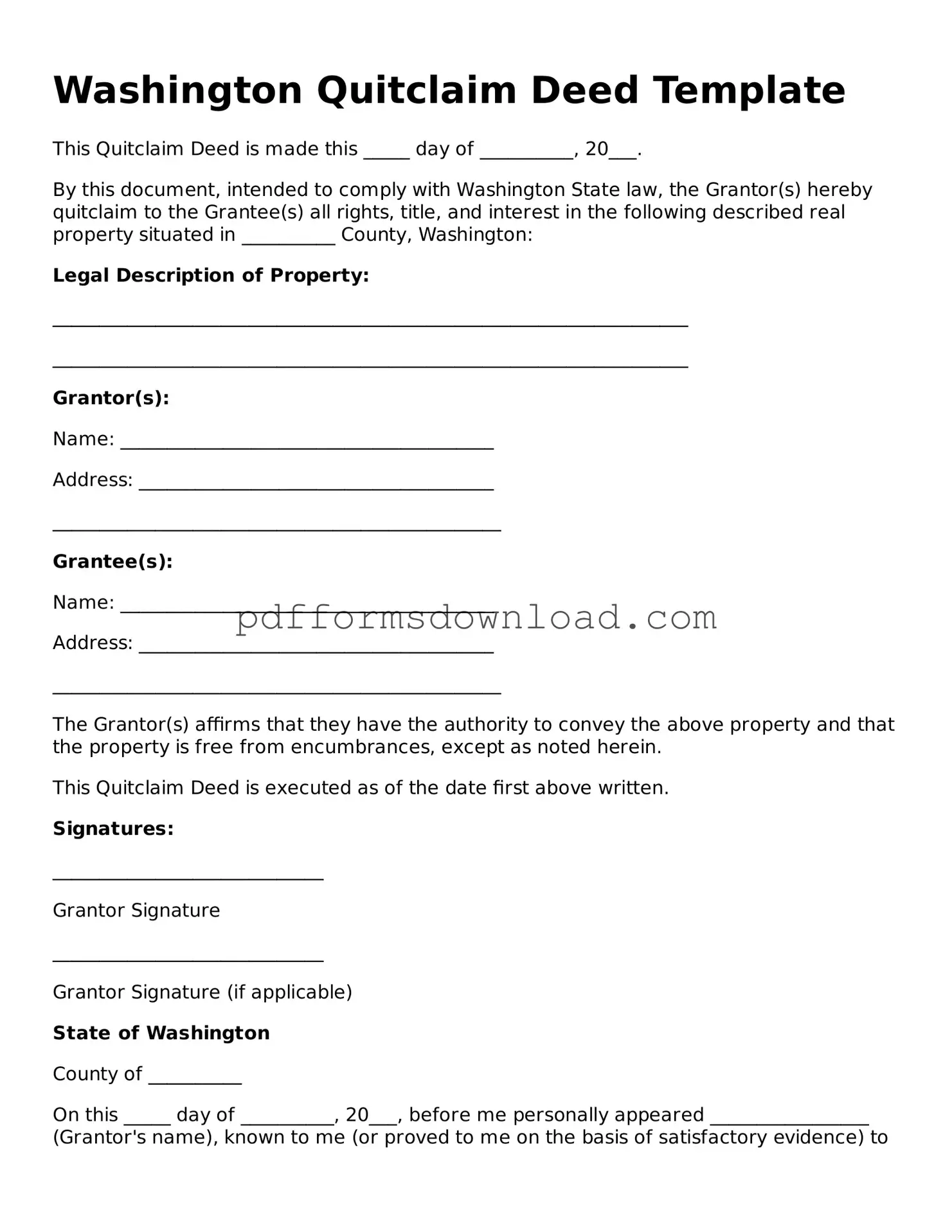Printable Washington Quitclaim Deed Form
A Washington Quitclaim Deed is a legal document used to transfer ownership of real property from one person to another without any guarantees about the title. This form allows the grantor to relinquish their interest in the property, making it a straightforward option for property transfers. To get started, fill out the form by clicking the button below.
Make This Document Now
